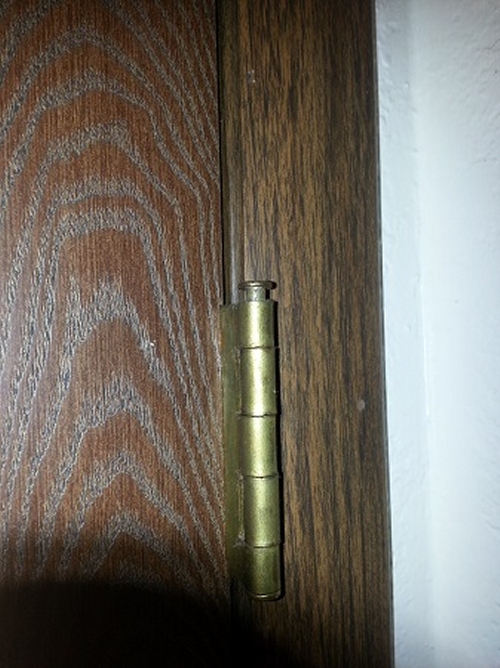
*Fixing an Annoying Door*
In our apartment we have two doors that will not stay closed unless completely latched, the bathroom and the bedroom door. A door that is not plumb, straight up and down, will swing open or closed depending on which way it is out of plumb.
The bathroom door is obviously inconvenient unless maybe your a very sociable person or an exhibitionist, I'm neither. This can be very embarrassing especially if the door in your bathroom is out of reach when sitting on the toilet.
The bedroom door isn't such a worry except the closet door is right behind the opened bedroom door so unless you make sure the door is latched the door opens bumping you while you try to move things into or out of the closet and if your carrying items out of the room you have to put stuff down to open the door again.
I tried to shim the hinge with cardboard but that didn't help much. I couldn't remember if you shimmed the door side or the jam side (or if that even mattered), top or bottom hinge so I tried both without little improvement. I got tired of wasting time so I did an internet search to try and find the correct procedure, I had read it in a handyman magazine years ago. Well the internet results didn't show anything about shimming the hinges but I did find information about a quick and easy fix for those annoying doors that won't stay put. So I decided to try it to see if it would really work and if it was as quick and easy as the internet claimed.
Tools you'll need for this project:
The directions were pretty simple without a lot of detail, pop the hinge pins out and use the hammer to bend the pin slightly. So that's what I did. These pins were fairly loose and hadn't been put in all the way so they were easy to pop out, yes I did try to put them almost all the way in before trying this because past experience makes me think the pins have a slight taper as well.

Just place the tip of the screwdriver at the bottom of the head of the hinge pin and drive the pin up by hammering on the end of the hand of the screwdriver.
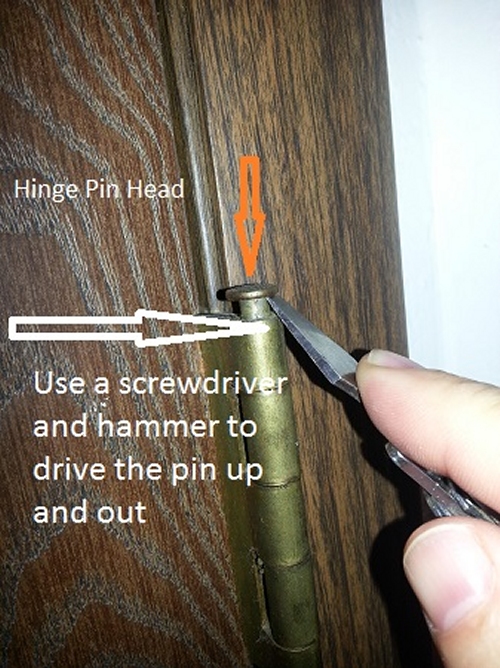
On the first door I removed one hinge pin at a time to see if bending just one would be enough to fix the problem. If you do this have a wedge to put under the bottom of the door or pull both hinge pins. With only one pin in place the door flops around and you can twist the other hinge enough to tear the screws out, at the least it is hard on the hinge and wood.
I took both pins out of the second door to take pictures to try and show the size difference and this had the side effect of making the whole processes even faster than the first door.
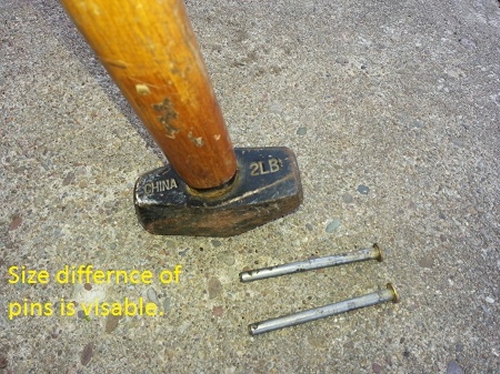
To remove the door from both hinges first close the door so you are standing on the hinge side. Knock both pins out by placing the blade of the screwdriver just under the head of the pin and drive it up by hammering the end of the screwdriver handle. Once you have both pins out slowly begin opening the door, hold on to the door knob and use your other hand to pull the door from the hinges once you have enough room to put your fingers around the door, most doors will fall from at least one of the hinges before I can get my fingers around the door. The other hinge will usually hang up but by getting the door almost back into alignment it will slip loose. If there are two doors to the room your in you can leave the door closed and use the other door until your finished, just mark the door so someone else doesn't open the door and have it fall over.
I noticed a couple of things when I pulled the hinge pins:
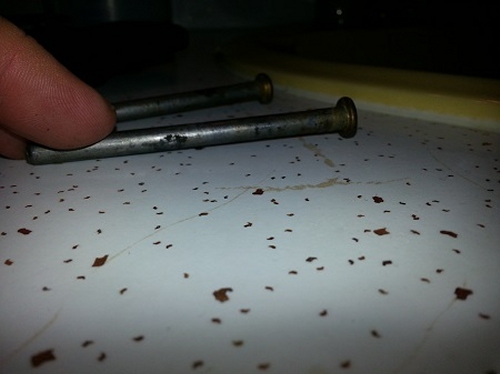
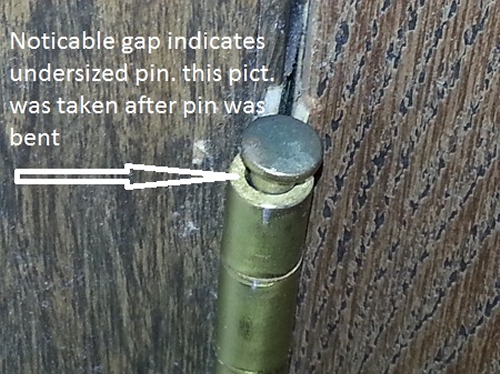
Once the hinge pin is out, take it to a hard surface so you can hammer on the pin. Don't use the counter; you'll put a nick in the counter for sure. I used the sidewalk at the front door. By hammering towards the bottom end of the pin, you get less of a curve.
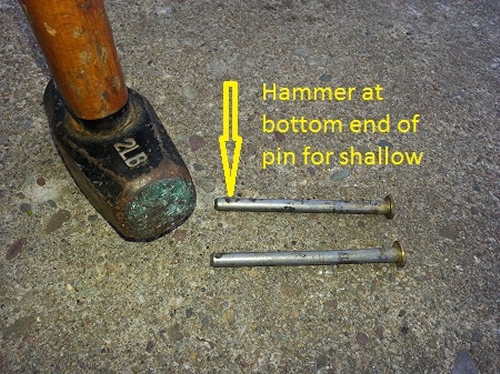
By hammering close to the head, you get a lot of curve.
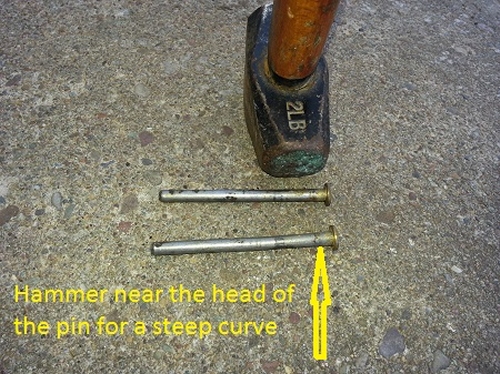
Decide how much bend you think you need; I needed a lot. Our doors would swing open unless fully latched and, with the undersized pins on the bottom, I figured I needed a lot of bend. I didn't want to make it so the pin wouldn't go back into the hinge though. My first whack didn't seem that hard, but it put a lot of curve in the pin.
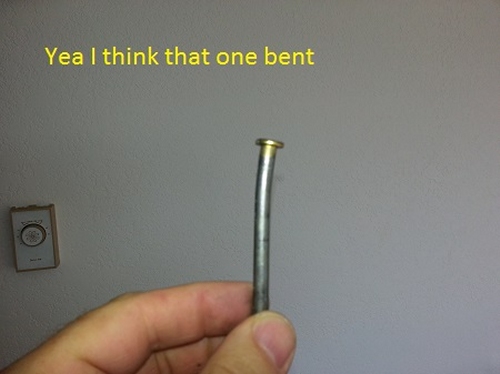
I did one pin at a time on the first door, to see if just doing one made a difference. It did, but not enough. Then I noticed the bottom pin was undersized and I figured there probably wasn't enough friction to keep the door from swinging open.

To re-hang the door, line the hinges up from the hinge side of the door. Once I have both hinges lined up (easier to do when the door is in an almost closed position), I usually use my thumb and forefinger at the bottom of the door side of the hinge to lift the door in place. Be careful that you don't pinch your fingers; don't ask how I know. Use your other hand (holding the door knob) to lift the door up, and a foot pushing the bottom in to help line up the bottom hinge. Once everything is lined up, then close the door.
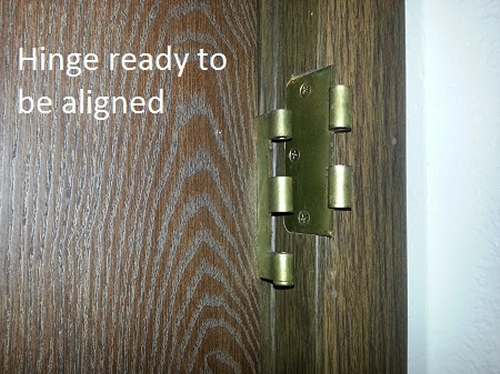
The door jam and hinges will hold it in place, so you have both hands free to put the pins back in.
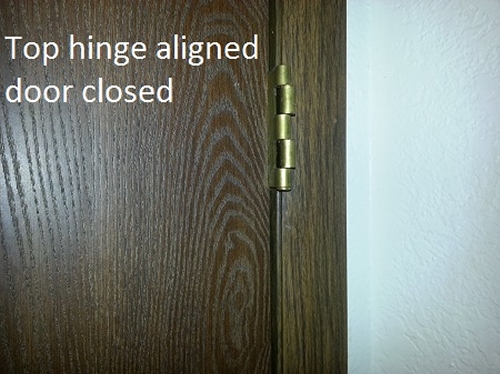
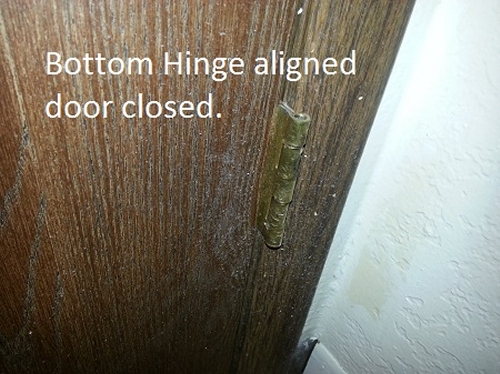
I've tried putting doors back in with a helper before, but the space is usually too tight for two people to work well.
When I put the pins back in the hinges, I start both pins.
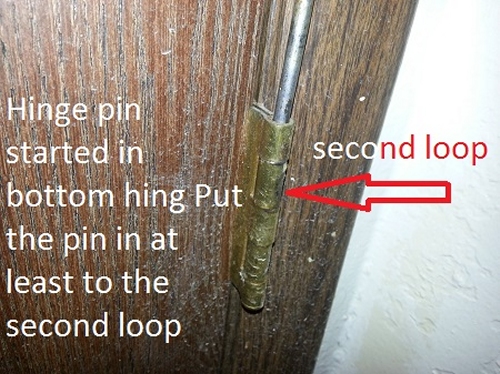
Then I hammered both pins almost all the way in. I placed the blade of the screwdriver in between the head of the pin and the hinge as a spacer to create a little gap, in case I had to pull the pin back out again.
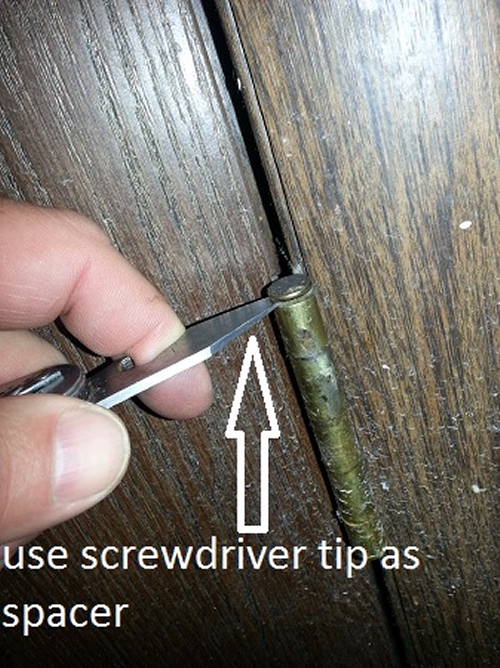
I learned to leave that little space when I managed apartments. Makes it a lot easier the next time you have to pop the hinge pin out to work on the door, and the gap isn't really all that noticeable unless you look closely.
The important stuff: Did it work and was it quick? Yes I had both doors fixed in under 15 minutes, including taking pictures, plus an additional 10 minutes on the internet search. I spent over an hour one day trying to shim the door hinges and that was just one door. I figure the pins will wear some but not enough for me to worry about. This is an apartment, and I won't be here forever. If I owned the place, I would consider doing the extra work to make the door plumb and level. It works, it is quick, and it beat the heck out of trying to plumb the door.
john1lt
www.alpharubicon.com
All materials at this site not otherwise credited are Copyright © 1996 - 2013 Trip Williams. All rights reserved. May be reproduced for personal use only. Use of any material contained herein is subject to stated terms or written permission.